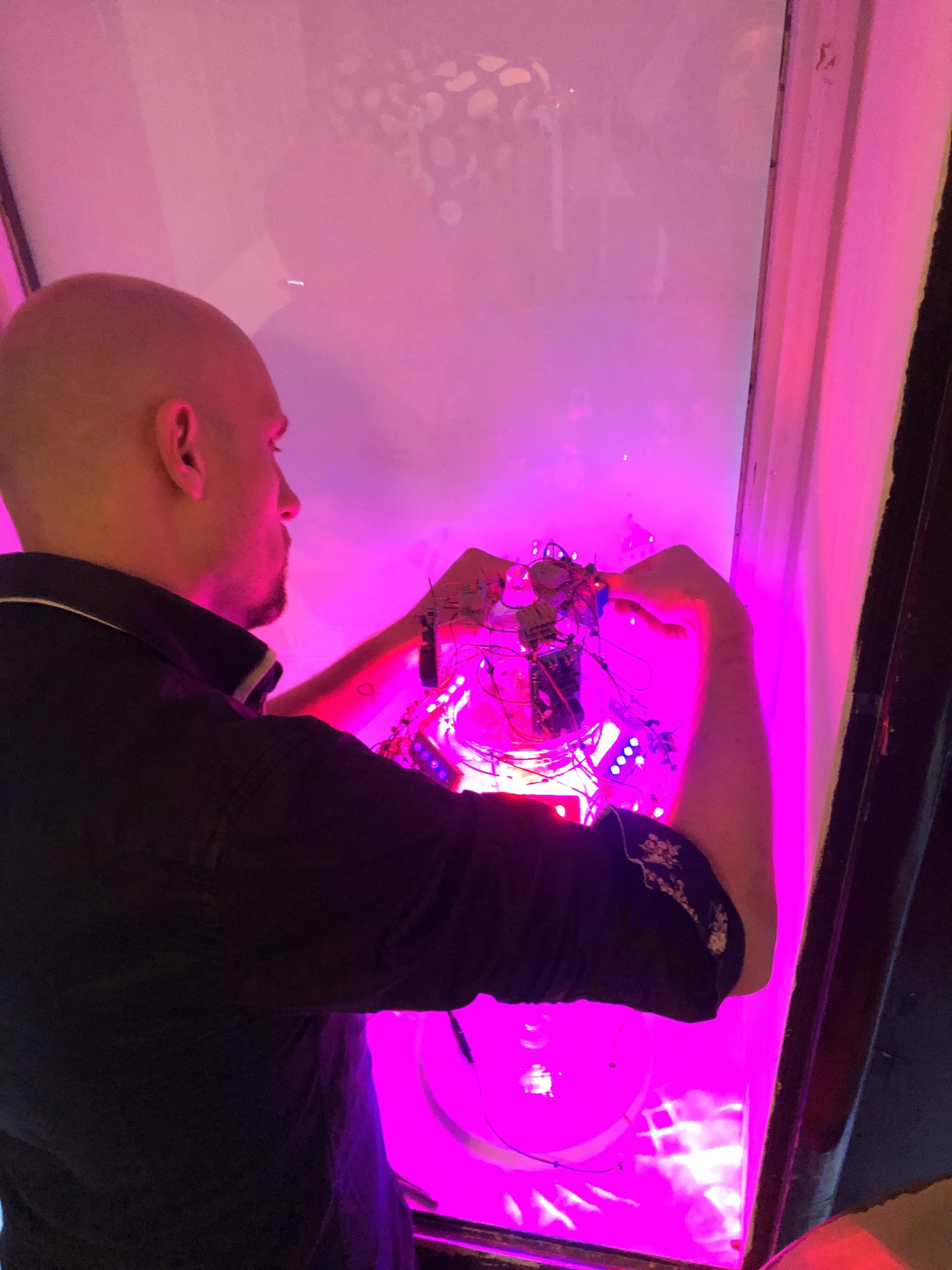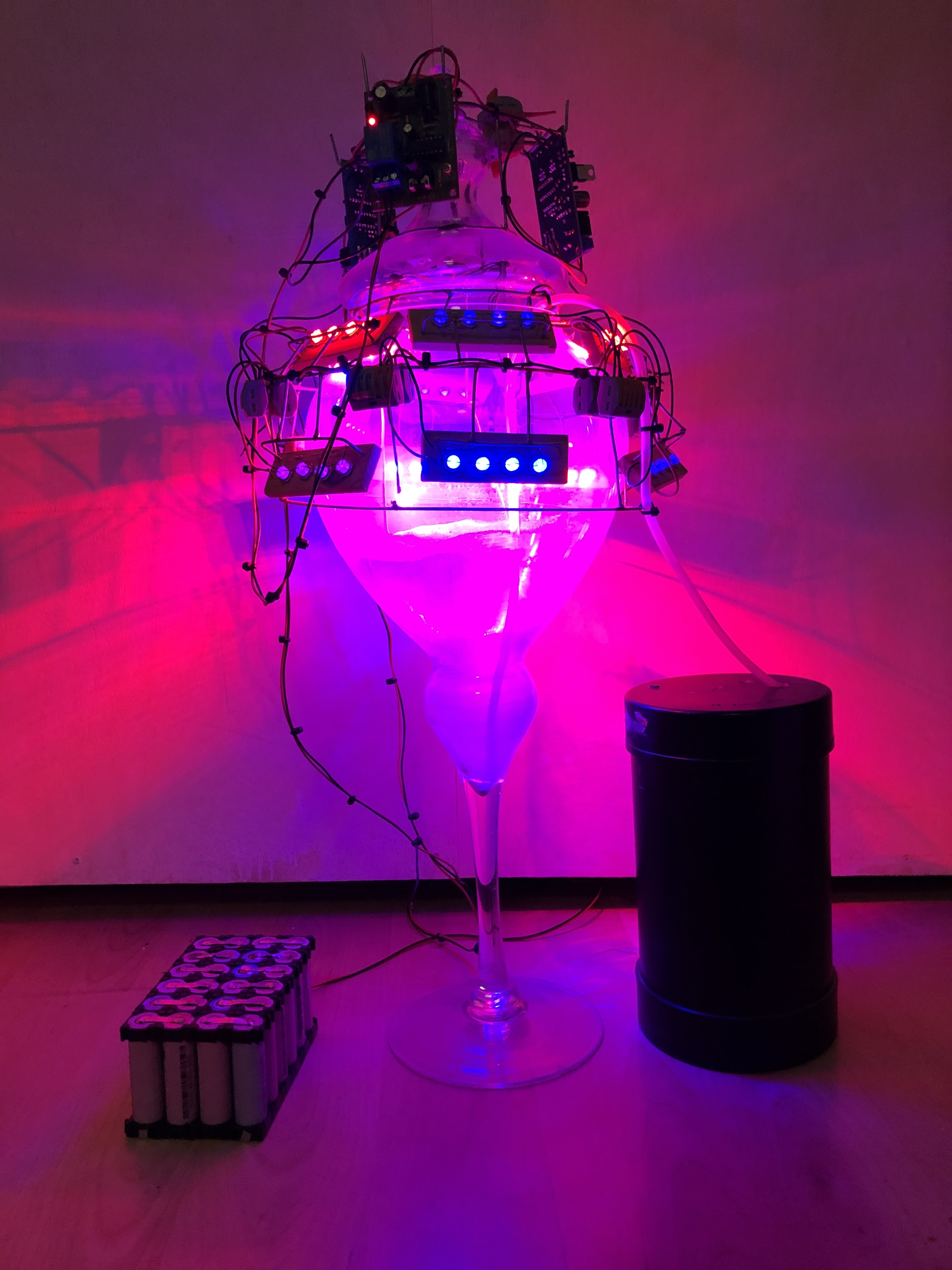Domi Horti Durabile
Autonomous Life Systems at the Intersection of Art and Technology
The title of my portfolio, "Domi Horti Durabile", is a Latin composition roughly translating to "The Gardens of the Self-Sustaining Home". This concept defines my work: autonomous ecosystems that sustain themselves without human intervention. In my installations, technology and nature are not opposites but collaborators in a delicate balance of adaptation and response. Each piece is an experiment in autonomy, a study of how an ecosystem can regulate itself when provided with the right conditions.
My installations vary in form but share a singular purpose: to create environments where plants, microorganisms, animals, and technology coexist in symbiosis. Some pieces resemble sculptural vases, where plants thrive within a controlled microclimate, dynamically adjusting to subtle changes in light, temperature, and humidity. Here, technology serves not as an intrusive force but as a quiet guardian—imperceptible yet vital to sustaining life.
Other works evolve into more intricate ecosystems, such as terrariums that independently regulate their internal conditions, sustaining plant life alongside fungi and microbial networks. These closed-loop systems generate unexpected interactions: moisture condensing on transparent walls, trickling back into the substrate, while minute temperature fluctuations dictate the rhythm of growth.
A further expansion of this concept led to the creation of an aquaponics system, where fish and plants coexist in a self-sustaining cycle. The fish provide nutrients for the plants, the plants filter and purify the water, and a carefully tuned technological framework ensures the continuity of this delicate exchange. What begins as a mechanically controlled process soon evolves into an organic entity, where each component depends on the next.
The most ambitious manifestation of this project was a fully autonomous ecosystem enclosed within a cabinet. This living machine integrated worms decomposing organic material, fish sustaining the nutrient cycle, and bacterial filters transforming waste into nourishment. Remarkably, this system functioned entirely on its own for 7.5 months, proving that a technological environment can foster a thriving, self-sufficient biome without human interference.
At the intersection of art, science, and technology, my installations are more than experiments in sustainability—they are reflections on our relationship with the natural world. At a time when human interventions threaten ecological balance, I propose an alternative vision: what if we were not controllers, but curators of equilibrium? What if technology existed not to dominate, but to nurture and collaborate with organic systems?
"Domi Horti Durabile" is my response to these questions—a series of living sculptures exploring the boundaries between autonomy and dependence, between function and art, between control and surrender to nature’s inherent intelligence.
Prima Generation – Domi Horti Durabile I

A home garden, an experiment, a warning.
This was my first functional prototype of the Domi Horti – a self-sustaining home garden where nature and technology intertwine, support, and ultimately disturb each other.
In this semi-enclosed greenhouse, water could return to the soil through condensation, creating a simple yet effective cycle. At the heart of the system was an ivy plant, rooted in a controlled base. It thrived under artificially extended daylight – up to 15 hours of light, powered by electronics attached beneath the lid and fueled by solar panels above.
The ivy grew rapidly. It clung to the wires, embracing the very technology that kept it alive. But after more than eighteen months, its growth became its downfall. The stems grew heavy, tearing the wiring loose. Ventilation failed. Light became scarce. Without support from the system that once sustained it, the plant withered. Not in sudden collapse, but through a slow and silent shift – like a frog in water slowly brought to a boil, unaware of the danger.
This work is more than a technical experiment or an aesthetic object. It is a mirror. A reflection of how we treat our own environment. How we rely on systems of our own making – and how, if we are not careful, those systems may fail us.
Prima Generation – Domi Horti Durabile I is a call to reevaluate our symbiosis. A reminder of the fragile balance between growth and decay, between technology and nature, between control and surrender.
Prima Generation – Domi Horti Durabile I

Domi Horti Hurabile version 2 | The twins

Two mirrored structures stand side by side — neither identical, yet unmistakably connected. Like siblings grown from the same soil, they echo one another in posture and presence, bound by quiet geometry and the memory of growth.
This second version of Domi Horti Durabile reflects on duality and divergence: how things that grow together may lean apart, and still remain one. A dialogue between form and fragility, permanence and change.
Exhibited at De Aanschouw, Rotterdam’s smallest and most enduring exhibition space, where art meets the street in a window frame of wonder.
Domi Horti Durabile – version 2 | The Twins
